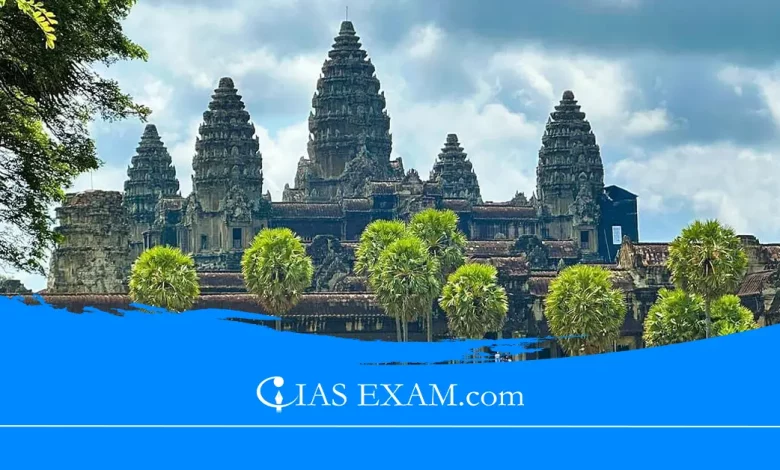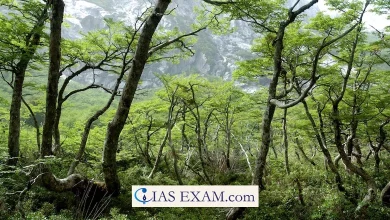
Context
The Cambodian Government recently removed individuals living in the vicinity of the Angkor Wat Temple Complex.
About the news
- Cambodia has requested for dismissing the allegations of bringing upon International Law detriment, which concerns banning the population residing nearby the Angkor Wat temple complex.
- A statement in the report titled as: UNESCO, states that areas in the dislocation process are unoccupied by the residents of the neighbouring traditional villages and squatters are the only ones facing residency relocation. Cambodian defends a possible breach of international law in Angkor Wat by evicting people who just are living near Angkor, by a note to UNESCO this is not really an expulsion of 107 villages’ residents, rather it is just an eviction of squatters.
- UNESCO wrote to the Cambodian authorities to react in November to Amnesty International’s accusations that thousands of families have been deprived of their houses and scattered in the area of the World Heritage Site by the tourist commercialization development.
- Among these ancient families were those ones which had lived there since early ancestry. With an unclear situation Amnesty publicised that Cambodia declared that families were voluntarily moving which later found refuted by the provided eyewitnesses who were forced to move.
- Moreover, they made complaints articulating on how miserable the living conditions were in the resettlement places and criticising UNESCO for its acceptance of the Cambodian government.
- UNESCO representatives in Paris responded with protests to the accusations and that they want to realise the report of Cambodia on the conservation of Angkor site earlier than expected previously.
- More importantly, they set a goal for the resettlement of the villagers that is done with a full assent from the affected.
Details about Angkor Wat Temple
About
- Angkor Wat Temple stands as a symbol of Cambodia’s rich cultural heritage, captivating visitors with its stunning architecture and profound historical significance.
- As one of the largest religious monuments in the world, Angkor Wat holds immense importance not only for Cambodia but also for humanity’s collective heritage.
Historical Background
- Designed in the 12th century A.D. For the Vishnu god, the Angkor Wat was initially built as the settlement of the Hindu King, Suryavarman.
- The bas-relief of the temple which is the reflection of high standards of construction and engineering at the peak of Khmer Empire’s apex.
- Through the course of its long involvement, Angkor Wat turned to be a Buddhist temple, which referred to the religious and cultural transformation of Cambodia.
Cultural Significance
- Angkor Wat or the Temple is not just about historical icons, Cambodia’s cultural heritage will always be.
- Among all of its complex carved ornaments, high towers, and sprawling space, the intricacy, magnitude, and quality exemplifies the Khmer civilization’s spiritual and artistic talents.
- Along with it, the temple centre serves the purpose of a pilgrimage site for Buddhists, attracting devotees from the whole world to remember the holy zone with their deities.
Tourism and Economy
- The tourism industry plays a vital role in Cambodia’s economy, with Angkor Wat Temple serving as a major attraction.
- Before the COVID-19 pandemic, millions of tourists visited Angkor Wat annually, generating significant revenue for the country.
- However, the pandemic’s impact on global travel has led to a decline in tourist arrivals, posing economic challenges for Cambodia and highlighting the need for sustainable tourism initiatives.
Conservation Efforts
- Maintaining the integrity of Angkor Wat’s architecture and the important cultural value in it is the most crucial thing for the upcoming generations.
- The Government Corporation of Cambodia, with help of world bodies and conservationists, has been in charge of a number of projects to preserve the Angkor temple complex.
- These efforts are restoring projects, conservation measures, and designing responsible tours to do mitigation of ecosystem degradation and the site’s ultimate sustainability.
Challenges and Opportunities
- Despite its enduring legacy, Angkor Wat Temple faces numerous challenges, including environmental degradation, encroachment, and inadequate infrastructure.
- Additionally, the COVID-19 pandemic has underscored the vulnerability of Cambodia’s tourism-dependent economy. However, amidst these challenges lie opportunities for innovation, community engagement, and sustainable development that can ensure Angkor Wat’s preservation while benefiting local communities and the broader Cambodian society.
Conclusion
- Angkor Wat Temple stands as a beacon of Cambodia’s cultural heritage, captivating visitors with its timeless beauty and historical significance.
- As a UNESCO World Heritage Site, Angkor Wat holds immense value not only for Cambodia but also for humanity as a whole.
- By prioritising conservation efforts, promoting sustainable tourism, and fostering cultural appreciation, we can ensure that Angkor Wat continues to inspire and enrich the lives of generations to come.
Source: The Hindu
UPSC Mains Practice Questions
Q.Angkor Wat Temple, a UNESCO World Heritage Site, represents a pinnacle of architectural and cultural achievement. Discuss the historical significance of Angkor Wat Temple and its contemporary relevance in the context of global cultural heritage conservation efforts.(150 Words)





.png)



